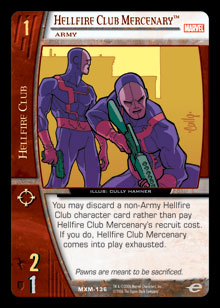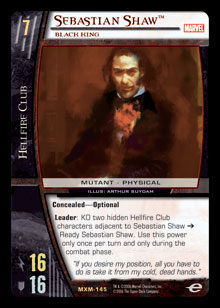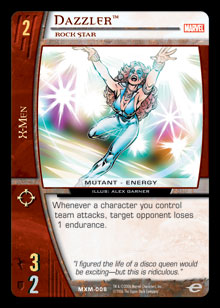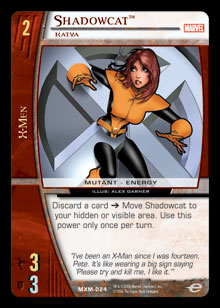 When last we left our fearless heroes, we had just met Kitty Pryde for the first time, as Emma Frost and Professor Charles Xavier fought over her recruitment for their various “gifted” academies. While Xavier attempted to convince the Prydes to release their daughter to his school, Storm, Colossus, and Wolverine were captured by Hellfire Club Mercenary soldiers and brought back to a Frost Industries warehouse. There, they were sedated and locked up alongside Professor X, who had been captured as well in the interim. Unbeknownst to Emma Frost, however, she had a stowaway on her Hellfire Club jet—young Kitty Pryde had used her abilities to infiltrate the jet and tag along to the warehouse where the aforementioned X-Men were prisoners.
When last we left our fearless heroes, we had just met Kitty Pryde for the first time, as Emma Frost and Professor Charles Xavier fought over her recruitment for their various “gifted” academies. While Xavier attempted to convince the Prydes to release their daughter to his school, Storm, Colossus, and Wolverine were captured by Hellfire Club Mercenary soldiers and brought back to a Frost Industries warehouse. There, they were sedated and locked up alongside Professor X, who had been captured as well in the interim. Unbeknownst to Emma Frost, however, she had a stowaway on her Hellfire Club jet—young Kitty Pryde had used her abilities to infiltrate the jet and tag along to the warehouse where the aforementioned X-Men were prisoners.
But enough about that. Let’s focus instead on another important storyline in the Dark Phoenix Saga—the introduction of one of my absolute favorite X-characters, the Dazzler! Kitty Pryde wasn’t the only mutant that Cerebro detected; it also discovered a mutant signature in lower Manhattan—Delano Street, to be specific. When Xavier flew to Chicago to investigate Kitty Pryde, he sent Nightcrawler, Cyclops, and Jean Grey to Manhattan to track down the other mutant. Leaving Nightcrawler outside to keep watch, Scott Summers (Cyclops) and Jean Grey—in civvies—entered a dingy nightclub in search of their mutant among the vile creatures of the dark side of the city.
 But the Hellfire Club was, as always, one step ahead. They had a two-tiered strategy: the first tier, an attack force waiting for the right moment to strike the X-trio; and the second tier, the re-emergence of Jason Wyngarde, entering the nightclub and using his Mastermind power to destabilize Jean Grey. And destabilize her, he did. After “bumping into” her on the dance floor, she was once again transported a couple of centuries into the past—specifically, to a wedding. The wedding was between the 18th century’s charming Sir Jason Wyngarde and his beautiful, blushing bride-to-be, the Lady Jean Grey. More significantly, as soon as the wedding—with one Vicar Sebastian Shaw presiding—was over, Wyngarde ripped Grey’s cloak from her body, revealing underneath . . . the costume of the Black Queen of the Hellfire Club! Grey and Wyngarde embraced in a passionate kiss, and when the 18th century disintegrated back into the 20th century, Jean Grey found herself lip-locked, right in front of Scott! But there was no time for explanation or debate, as the Dazzler took the stage, and Scott discovered that it was her who was their second mutant signature.
But the Hellfire Club was, as always, one step ahead. They had a two-tiered strategy: the first tier, an attack force waiting for the right moment to strike the X-trio; and the second tier, the re-emergence of Jason Wyngarde, entering the nightclub and using his Mastermind power to destabilize Jean Grey. And destabilize her, he did. After “bumping into” her on the dance floor, she was once again transported a couple of centuries into the past—specifically, to a wedding. The wedding was between the 18th century’s charming Sir Jason Wyngarde and his beautiful, blushing bride-to-be, the Lady Jean Grey. More significantly, as soon as the wedding—with one Vicar Sebastian Shaw presiding—was over, Wyngarde ripped Grey’s cloak from her body, revealing underneath . . . the costume of the Black Queen of the Hellfire Club! Grey and Wyngarde embraced in a passionate kiss, and when the 18th century disintegrated back into the 20th century, Jean Grey found herself lip-locked, right in front of Scott! But there was no time for explanation or debate, as the Dazzler took the stage, and Scott discovered that it was her who was their second mutant signature.
Meanwhile, Kitty had managed to infiltrate the facility where the X-Men were being held. She roused Storm from her stupor, and Storm gave Kitty the phone number of the X-Men. Discovered but undaunted, Kitty fled until she found a phone. She dialed the number Storm had given her, reaching Nightcrawler. However, before he could act on that information, he—and the nightclub—were attacked by three of the armored Hellfire Club soldiers.
The soldiers were specifically geared to defeat these three particular mutant heroes. However, they didn’t count on an anomaly; the Dazzler changed the odds, helping the X-Men defeat the soldiers and then fleeing with the heroes. They were able to find and rescue Kitty Pryde, who was being chased by more Hellfire Club Mercenary soldiers. Jean Grey destroyed their car, killing them. This was a turning point for Jean Grey, as she seemed to become more and more powerful. Her personality began to fray around the edges, and her voice was becoming darker, her mood even more so. Scott in particular was noticing the shift, and readers everywhere would wonder as well at this change in Jean Grey. What had the Phoenix Force done to her, and what was happening?
MUTANT MAYHEM! - THE X-MEN IN VS. SYSTEM, PART 1
The X-Men characters featured in the X-Men set essentially cross three major “eras,” with a few other characters in there for good measure. Those three eras are the Dark Phoenix Saga, the Morlock/Mutant Massacre era (which coincided with the Freedom Force and re-introduced the Hellfire Club), and the history of the Acolyte movement. The new set also touches upon the Astonishing X-Men and X-Treme X-Men, and it has a few scattered characters from other eras, but those are not as ingrained in the set as the other three plot lines are.
Some readers of my column may remember my history of the original five X-Men and their origins. The X-Men in the Silver Age lasted only 66 issues, and it wasn’t until Giant-Sized X-Men #1—followed by X-Men #94—that the X-Men started to gain in popularity. This was the turning point in comics history, and it is widely regarded as the divisionary line between the Silver Age of comics and the Bronze Age. Dave Cockrum and Len Wein helped Chris Claremont set up the new X-Men in 1974, and Claremont took the writing reins himself in ’75. However, from #94 until #129 (which introduced Emma Frost and Kitty Pryde), there were a series of ups and downs for the title, as people were interested in this new team—especially a team without Professor X, who had left at that point—but many weren’t ready to commit yet. John Byrne’s entry as artist (and later co-creator) of the book helped. He came in at #108, and #109 introduced Weapon Alpha, setting the stage for Alpha Flight’s introduction in #120. This storyline is proudly remembered by all of us Canuckistanians who eagerly await 2009 in the hope that Jeff Donais has been telling the truth about an Alpha Flight set!
Claremont was at the top of his writing game, and what made him unique among Marvel writers at the time was his (pardon the pun) uncanny way of plotting out stories 20 to 30 issues in advance, so that something that happened 15 issues earlier would come back as an important plot point much later on. When X-Men #129 came out, plots and subplots that had been slowly laid down and hinted at for 40 issues came to a head in what has been arguably the single most important comic book run in Marvel history—The Dark Phoenix Saga.
The main Saga was eight issues long, from #129 to #137, and its repercussions were felt in issues of X-Men for a couple of hundred issues and throughout several X-title spin-offs. The Saga introduced Kitty Pryde, Dazzler, and the Hellfire Club, and it fully integrated Marvel Earth into a wider Universe. Before, we had Captain Mar-Vell and the Kree-Skrull War, the coming of Galactus, and Thanos and the Eternals of Titan—each of them stemming from plotlines that were extraneous to the happenings of Earth itself (save perhaps Galactus, who would have eaten Earth, but I digress). With the Dark Phoenix Saga, other alien cultures began to take notice of Earth as more than just a strategic foothold in a pan-galactic battlefield or a light after-dinner snack. Instead, Earth became the home to inhabitants who could become powerful enough for more advanced civilizations—like the Shi’ar—to take notice and be wary of.
THE VOCAL MINORITY
 The previous version of Dazzler in Vs. System (Dazzler, Alison Blaire from Marvel Origins) was from when she was already established as a character and an X-Man. Dazzler, Rock Star, however, is a different matter altogether. She’s in her original disco costume from when she was a performer—complete with roller skates—thrilling audiences with a dazzling combination of pop music and brilliant light effects. Her mutant power is to transmute sound to light; the louder the sound, the more energy her body stores, and the more light she produces. In fact, if she didn’t forcibly contain and release the sound, she would be emitting bits of light all of the time, almost like radiation, which would literally cause her to glow.
The previous version of Dazzler in Vs. System (Dazzler, Alison Blaire from Marvel Origins) was from when she was already established as a character and an X-Man. Dazzler, Rock Star, however, is a different matter altogether. She’s in her original disco costume from when she was a performer—complete with roller skates—thrilling audiences with a dazzling combination of pop music and brilliant light effects. Her mutant power is to transmute sound to light; the louder the sound, the more energy her body stores, and the more light she produces. In fact, if she didn’t forcibly contain and release the sound, she would be emitting bits of light all of the time, almost like radiation, which would literally cause her to glow.
The differences in stats for the Alison Blaire and Rock Star versions merely reflects the specific powers that the cards are focusing on, not her experience level. The characters in this game are not always placed into drops chronologically. That is to say, an older, more experienced version of a character will not guarantee that it will be at a higher drop. Alison Blaire’s power is to literally dazzle her opponent, blinding him or her and forcing an exhaust. Like Rock Star, the ability is contingent on being part of a team. Alison Blaire forces you to discard an X-Men character card because she is helping her teammates and they are helping her, using each other’s abilities to gain an advantage over their opponents.
Rock Star is from a different era, however. The importance of “teamwork” is only beginning to make an impression on her. When discovered by the X-Men, she immediately helped them defeat the Hellfire Club’s armored soldiers. She would stick with the X-Men and train alongside them, sharpening her skills, and more importantly, her control over those skills. Cyclops in particular would help her increase the precision and power of her light blasts, using his experience with his optic blasts and his presence as a leader to guide her through her mutant “growing pains.” Her light blasts are a form of energy projection as well, which is what grants her range, albeit with a fairly low ATK. She isn’t a full-fledged X-Man yet, so her ability—causing an opponent to lose 1 endurance when a character team attacks—isn’t contingent on those characters being X-Men. However, the importance of working as a team is beginning to grow on her, so each character involved in that team attack causes a loss of 1 endurance, which can be quite brutal in an off-curve aggro strategy such as the Faces of Evil deck. She can also make an interesting character to use in multi-player, as she doesn’t have to target the opponent she’s attacking.
 Kitty Pryde is better known as Shadowcat to Vs. players. Unfortunately, none of the Shadowcat versions in the game specifically match her Dark Phoenix Saga era. Shadowcat, Kitty Pryde is from slightly later, when she found Lockheed. Shadowcat, Pride of the X-Men is from when she first became Shadowcat in the late ’80s, and Shadowcat, Katya from this set is her Astonishing X-Men version. At one point, there was to be another version of her in this set, but alas, ’twas not to be.*
Kitty Pryde is better known as Shadowcat to Vs. players. Unfortunately, none of the Shadowcat versions in the game specifically match her Dark Phoenix Saga era. Shadowcat, Kitty Pryde is from slightly later, when she found Lockheed. Shadowcat, Pride of the X-Men is from when she first became Shadowcat in the late ’80s, and Shadowcat, Katya from this set is her Astonishing X-Men version. At one point, there was to be another version of her in this set, but alas, ’twas not to be.*
Kitty’s ability is to “phase.” That is, her body becomes ethereal, and she can shift her molecules between those of the material around her. This allows her to become like a ghost and pass through solid objects, be they people, tables, walls, and so on. Her Kitty Pryde version is a younger version of her character, when she was still figuring out her powers and was just learning how to allow her fellow X-Men to phase with her. You see, Kitty can phase whatever she is touching as well, so when grabbing the hand of a fellow X-Man, the X-Man will phase—hence, giving that character a +1 DEF bonus during an attack as she potentially phases him or her out of danger.
Pride of the X-Men takes this ability one step further. At that point, she had even more control over her phasing and could grab people and literally phase them out of danger—through a wall and out of the combat zone. So, if a character is in danger, she can pop him or her out of danger by phasing away from the battlefield. She also has evasion, as she can make herself intangible. She can’t attack you (which is why she stuns, effectively taking her out of combat), but she is unhurt (so that she auto-recovers at the beginning of the recovery phase). Kitty has been known to go on “rescue detail” during combat, such as in the Astonishing X-Men when facing down Ord. While the rest of the X-Men were facing off against him, she was sneaking in and phasing the hostages out one by one from right under the noses of the guards.
Finally, in her Katya version, her DEF is a little lower than that of Pride of the X-Men because this is stealth-Kitty. Whereas Pride of the X-Men is focused on a high DEF and is more of a defensive card altogether, this is the Kitty who is used for recon missions—sneaking into Benetech, taking out security systems, and so on. With a simple discard, she can pop in or out of the hidden area once per turn, moving in and out of the shadows, difficult to see coming and difficult to track down, ghosting to and fro. If you can get ahold of her, you can make her pay for that lower DEF . . . but that’s a big “if”!
NEXT WEEK: Showdown with the Hellfire Club!
Questions? Queries? Comments? Send ’em along and I’ll try to get them answered in the column! Email me at:
Kergillian (at) hotmail (dot) com
* We do see this young Kitty Pryde in Harry’s Hideaway, munching down some ice cream with Ororo. They hit it off from the moment they met and would become, essentially, sisters from then on. Kitty would help Storm through the tumultuous time when she lost her powers, and Storm would help Kitty through several traumatic losses in her own life, from Douglas Ramsey’s death to that of Colossus.
Also known by his screen name Kergillian, Ben Kalman has been involved in the VS community since day one. He started the first major online community, the Vs. Listserv, through Yahoo! Groups, and it now boasts well over 1,850 members! For more on the Yahoo! group, go to http://groups.yahoo.com/group/Marvel_DC_TCG.